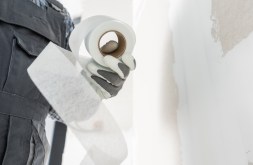A Comprehensive Guide to Dealing with Common Upholstery Issues

Upholstery is an essential part of any furniture piece, adding comfort and style to our homes. However, over time, upholstery can encounter a variety of issues that can affect its appearance and functionality. From stains and tears to fading and sagging, dealing with common upholstery issues can be a daunting task. In this comprehensive guide, we will explore some of the most common upholstery problems and provide practical solutions to help you restore your furniture to its former glory.
Stains and Spills
One of the most common challenges faced by upholstery owners is dealing with stains and spills. Whether it’s a glass of red wine or an accidental coffee spill, these unsightly marks can ruin the look of your furniture. Fortunately, there are several effective methods for removing stains from upholstery.
Firstly, it’s important to act quickly. Blot the stain gently with a clean cloth or paper towel to absorb as much liquid as possible. Avoid rubbing the stain, as this may spread it further. For water-based stains like soda or juice, mix a solution of mild dish soap and lukewarm water. Dip a clean cloth into the solution and gently dab at the stain until it fades away.
For tougher stains like ink or grease, consider using specialized upholstery cleaners or spot removers specifically designed for these types of stains. Always test any cleaning product on a hidden area before applying it to the stained spot.
Tears and Rips
Another common issue with upholstered furniture is tears and rips in the fabric. These can occur due to sharp objects or excessive wear and tear over time. While minor tears can often be repaired at home using basic sewing techniques, larger or more severe damage may require professional assistance.
To repair minor tears yourself, start by cleaning the area around the tear with mild soap and water to remove any dirt or debris. Then, carefully align the torn edges and use a needle and thread to sew them back together. Choose a thread color that matches the upholstery for a seamless repair. Reinforce the repaired area with fabric glue or adhesive tape for added durability.
For larger tears or if you’re unsure about your sewing skills, it’s best to consult a professional upholsterer who can assess the damage and provide suitable repair options.
Fading and Sun Damage
Exposure to sunlight can cause upholstery fabrics to fade over time, resulting in an uneven appearance. To prevent fading and sun damage, it’s important to take proactive measures.
One effective solution is to use window treatments such as blinds or curtains to block direct sunlight from reaching your furniture. UV-protective films can also be applied to windows, reducing the amount of harmful UV rays that penetrate through.
Additionally, rotating your furniture periodically can help distribute sunlight exposure more evenly across different areas of the upholstery. This will minimize the chances of noticeable fading in specific spots.
Sagging Cushions
Over time, cushions on upholstered furniture may start sagging due to prolonged use or insufficient support. This not only affects comfort but also diminishes the overall appearance of your furniture.
To address sagging cushions, start by removing them from their covers and fluffing them up manually. If this doesn’t provide sufficient support, consider adding extra filling or foam inserts. These inserts can be easily purchased from home improvement stores or online retailers specializing in upholstery supplies.
If all else fails, it may be time to consider professional reupholstering services. An experienced upholsterer will replace worn-out foam or padding and ensure that your cushions regain their original shape and comfort.
Conclusion
Dealing with common upholstery issues doesn’t have to be a daunting task. By following the practical solutions outlined in this comprehensive guide, you’ll be able to tackle stains, tears, fading, and sagging cushions with confidence. Remember to act quickly when dealing with stains, seek professional help for major repairs, take preventive measures to protect against sun damage, and provide adequate support to prevent cushion sagging. With proper care and maintenance, your upholstery will continue to enhance the beauty and comfort of your home for years to come.
This text was generated using a large language model, and select text has been reviewed and moderated for purposes such as readability.





